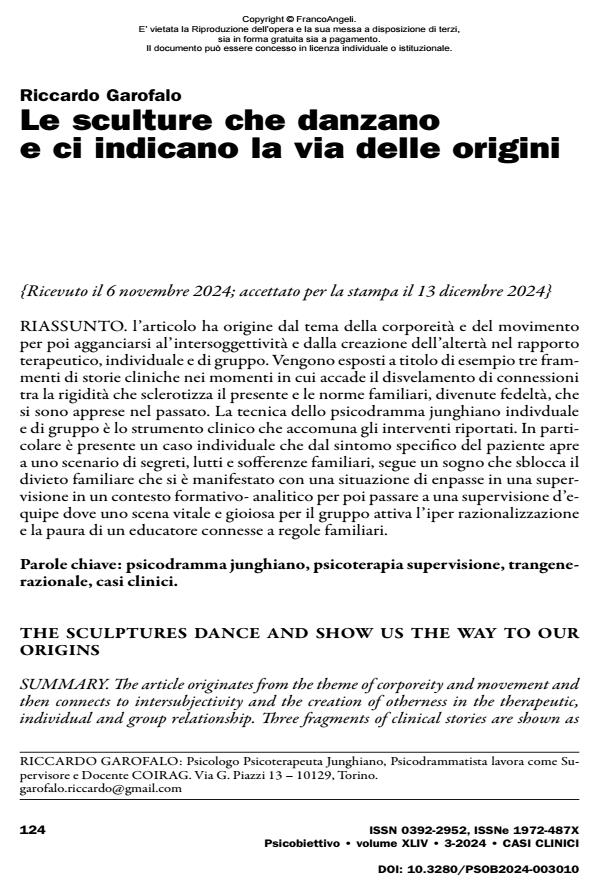The sculptures dance and show us the way to our origins
Journal title PSICOBIETTIVO
Author/s Riccardo Garofalo
Publishing Year 2025 Issue 2024/3
Language Italian Pages 7 P. 124-130 File size 138 KB
DOI 10.3280/PSOB2024-003010
DOI is like a bar code for intellectual property: to have more infomation
click here
Below, you can see the article first page
If you want to buy this article in PDF format, you can do it, following the instructions to buy download credits

FrancoAngeli is member of Publishers International Linking Association, Inc (PILA), a not-for-profit association which run the CrossRef service enabling links to and from online scholarly content.
The article originates from the theme of corporeity and movement and then connects to intersubjectivity and the creation of otherness in the therapeutic, individual and group relationship. Three fragments of clinical stories are shown as examples in the moments in which connections are revealed between the rigidity that scleroticizes the present and the family norms, which have become loyalties, that have been learned in the past. The technique of individual and group Jungian psychodrama is the clinical tool that unites the reported interventions. In particular, there is an individual case which from the specific symptom of the patient opens up to a scenario of family secrets, mourning and suffering, followed by a dream which unlocks the family prohibition which manifested itself with a situation of impasse in a supervision in a training contextanalytical and then move on to team supervision where a vital and joyful scene for the group activates the hyper rationalization and fear of an educator connected to family rules.
Keywords: Jungian Psychodrama, Supervised Psychotherapy, Transgenerational, Clinical Cases.
Riccardo Garofalo, Le sculture che danzano e ci indicano la via delle origini in "PSICOBIETTIVO" 3/2024, pp 124-130, DOI: 10.3280/PSOB2024-003010